Dana Murray, Heal the Bay’s senior coastal policy manager, provides an update on the spill and what can be done to prevent these kinds of disasters. For her, the fight is personal.
May 20, 2015 — Refugio State Beach in Santa Barbara is just that – a coastal refuge teeming with sensitive wildlife. It’s a treasured and protected state beach park along California’s coastline and a culturally significant and historic Native American place – the Chumash named it “Qasil” meaning “beautiful.” Sadly, Refugio also will now be known as home to one of the largest coastal oil spills in California history.
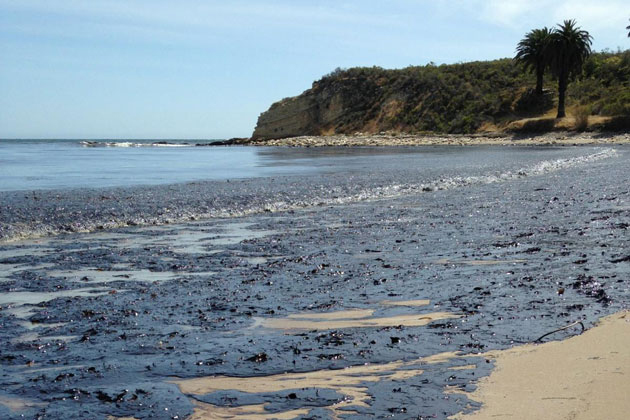
On Tuesday afternoon, a ruptured pipeline spilled an estimated 100,000 gallons of oil along Refugio Beach over the course of a few hours. This number is sure to grow as we learn more. Although the pipeline, owned by Plains All American Pipeline, is inland on other side of the 101 freeway, the leaked oil spread to a culvert, which then spilled the oil onto the beach and into the ocean.
With ocean currents and winds blowing at 15 knots, the oil spill is spreading south toward Isla Vista and Santa Barbara–and the pristine Naples Marine Protected Area. The oil sheen covers over nine miles of the coastline and is expected to spread even further. With an oil spill of this magnitude, we are already witnessing impacts to coastal and marine wildlife along the Southern California coast, and can expect to see more over the coming days and weeks.
California State Parks has closed Refugio’s popular campground and beach indefinitely, and issued a warning for nearby El Capitan State Beach ahead of the busy Memorial Day weekend. The California Department of Fish and Wildlife has closed fishing and shellfish harvesting in Santa Barbara County within one mile of Refugio Beach, effective immediately and remaining in place until the California Environmental Protection Agency advises that it is safe for fishing to resume.
California’s Office of Spill Prevention and Response has dispatched cleanup crews to Refugio Beach, clad in white jumpsuits, to attempt to scoop up oily sand into buckets. And California’s Oiled Wildlife Care Network has been activated to rescue any oiled wildlife, with a focus on protecting snowy plover and least tern habitats. Meanwhile, the U.S. Coast Guard has deployed crews and barges to use skimmers and booms to try and stop the spread of oil in the ocean and try to remove what it can.
Santa Barbara’s coastline has been struck by oil spills in the past, most notably in 1969 when a well drilling blow-out at an offshore platform spilled an estimated 4.2 million gallons of crude oil. Two hundred square miles of ocean and 35 miles of coastline were oiled and thousands of animals were killed. This oil spill and the public response helped spark the modern environmental movement and Earth Day in the United States.
The most common questions we receive after an ecological disaster like this are:
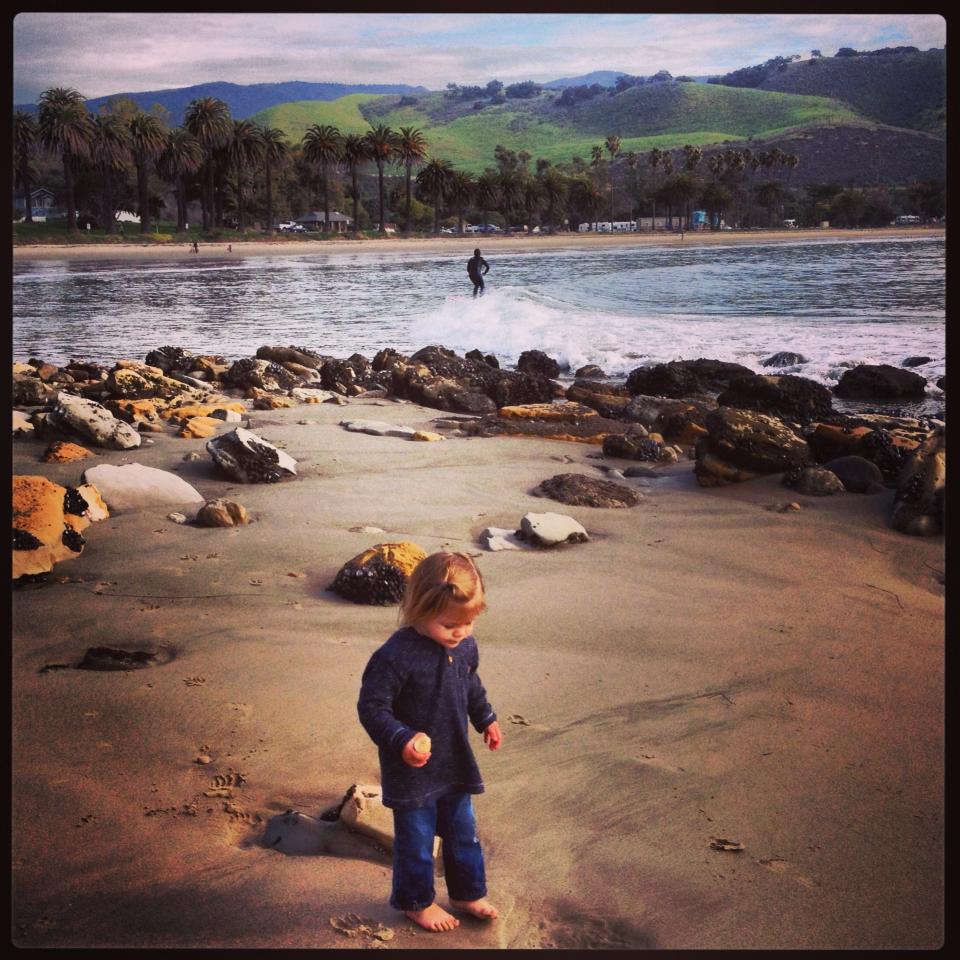
What can we do to help?
When good-hearted people see images of the devastation, many want to volunteer and help rescue animals or remove oil. For now, public agencies overseeing the cleanup have not requested help from the general public. We will keep you posted if volunteer opportunities do arise.
And remember, if you do see oiled wildlife, do not pick up or try to rescue wild animals. Wildlife capture takes special training to prevent injury to the animal as well as the person. Instead, report oiled wildlife you see to (877) 823-6926 and trained experts will respond.
Oiled birds that show up on our shores are usually seabirds that don’t typically come to land, except when they are cold and tired, as the oil has impaired their ability to survive. If well-intentioned people attempt to capture oiled seabirds, they can inadvertently harm them further, or scare the wildlife back out into the water and cause them to get even more cold and tired.
More information on how to help oiled wildlife can be found at www.owcn.org.
How can we make sure that this doesn’t happen in Santa Monica Bay?
On the policy front, Heal the Bay is calling on all Californians to urge state politicians to pass the California Coastal Protection Act of 2015. This bill is also known as SB 788 and would close an oil drilling loophole in California’s Coastal Sanctuaries Act. This loophole allows drilling from federal lands into state waters, which is one of the last risks to Santa Monica Bay and other coastal areas in California.
Ultimately, the only way to prevent more devastating oil spills to our ocean and coastline is to say NO to more offshore oil drilling. Sign the petition to tell California legislators that we don’t want another Refugio:
California has already taken a position to intentionally forgo any revenue from new offshore oil development due to the unacceptably high risk of oil spills, and has instead focused on developing clean, renewable energy. California also passed the Marine Life Protection Act in 1999, which led to the establishment of marine protected areas in 2012, which are designed to protect and conserve marine life and habitat. SB 788 calls for the Coastal Sanctuary Act to be updated to reflect marine protection goals established in the MLPA, and close the oil drilling loophole.
The simple answer is no drill, no spill. Heal the Bay and our partners recently defeated another oil company’s plans to drill for oil in Hermosa Beach, just six blocks from the ocean. Even inland oil pipelines and drilling operations can lead to coastal oil spills. And as we have seen, oil spills have the potential to significantly impact marine life and habitats throughout the Southern California Bight because they can spread rapidly over great distances and can be difficult to detect and clean up. For example, an oil spill that originated in El Segundo in the 1990s reached Malibu Lagoon, and the infamous 1969 Santa Barbara oil spill spread along the coast for more than 35 miles. Furthermore, any oil spill is likely to have an impact on tourism and the coastal economy.
Our state and communities have made significant investments to protect and enhance marine and coastal habitats in California, such as establishing marine protected areas and restoring coastal lagoons and wetlands. Oil spills directly undermine these long-term efforts.
I once was fortunate enough to live just 10 minutes downcoast from Refugio while in grad school. As you can see in the photo above, I’ve surfed the waves at the point with my husband, conducted scientific surveys of underwater marine life and camped and tidepooled along the beach with my young daughter. (You can see my husband and daughter enjoying this special place in the photo above.)
It’s really hard to imagine that one of my favorite spots in California has now been smothered by crude oil.
I’m going to do all I can to prevent this from happening to other places in the future and I invite you to join me.
–Dana
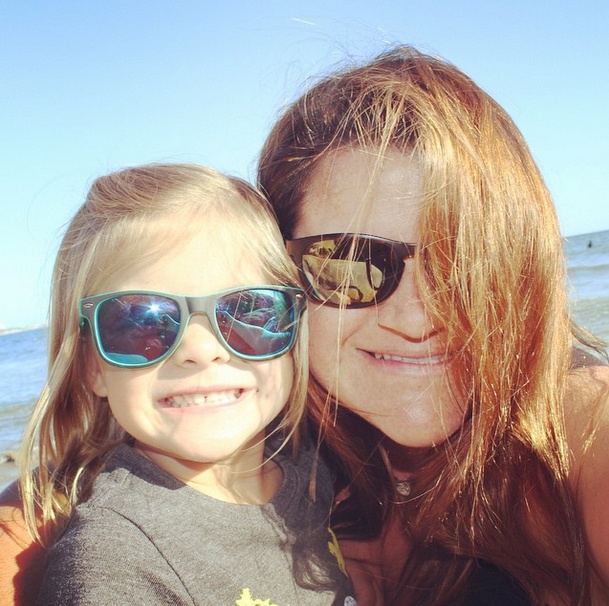
Sign the petition to end offshore oil drilling in California!
Be sure to sign up for our email list for the latest spill updates and other ways you can help protect our coast and watersheds.
For the latest information on this and other California oil spills, like California Spill Watch on Facebook and follow them on Twitter.




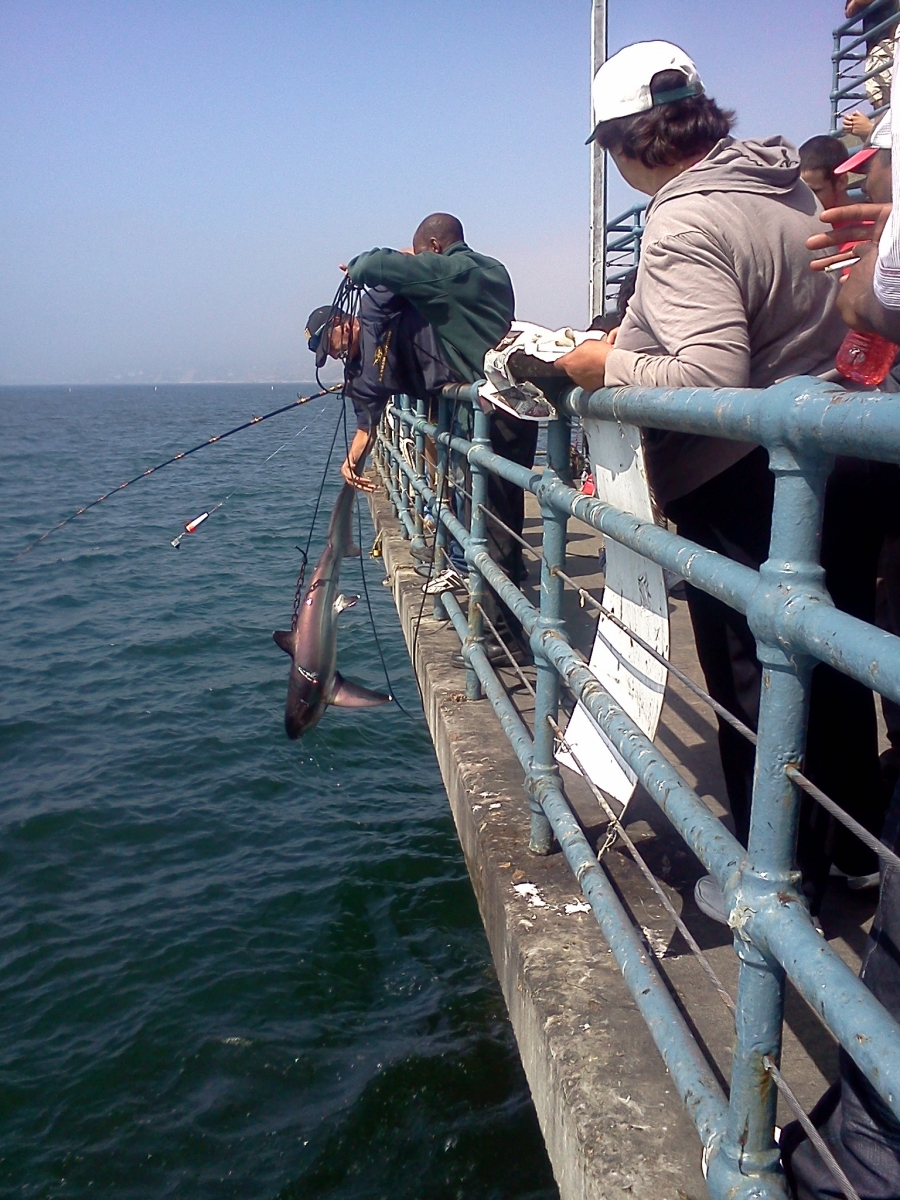
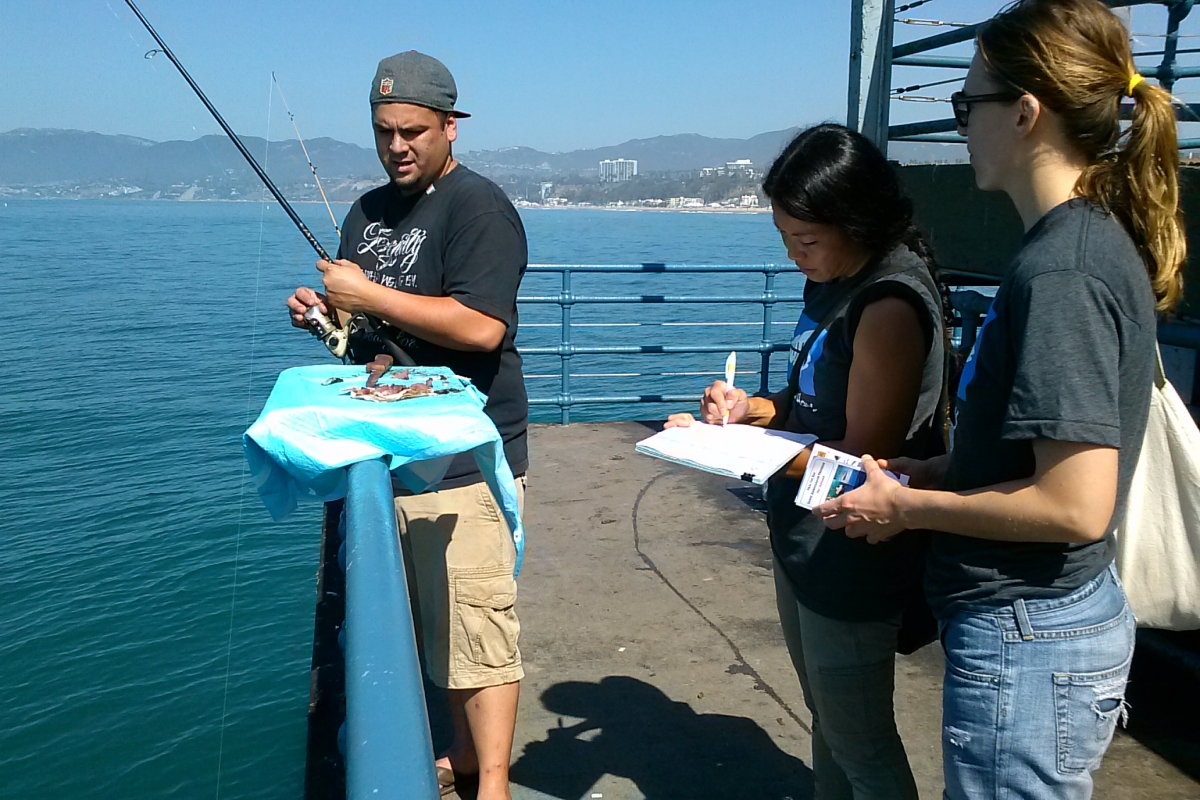 Our Shark Ambassadors talk with an angler at the S.M. Pier.
Our Shark Ambassadors talk with an angler at the S.M. Pier. 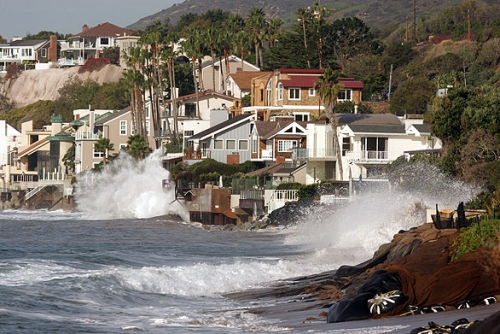
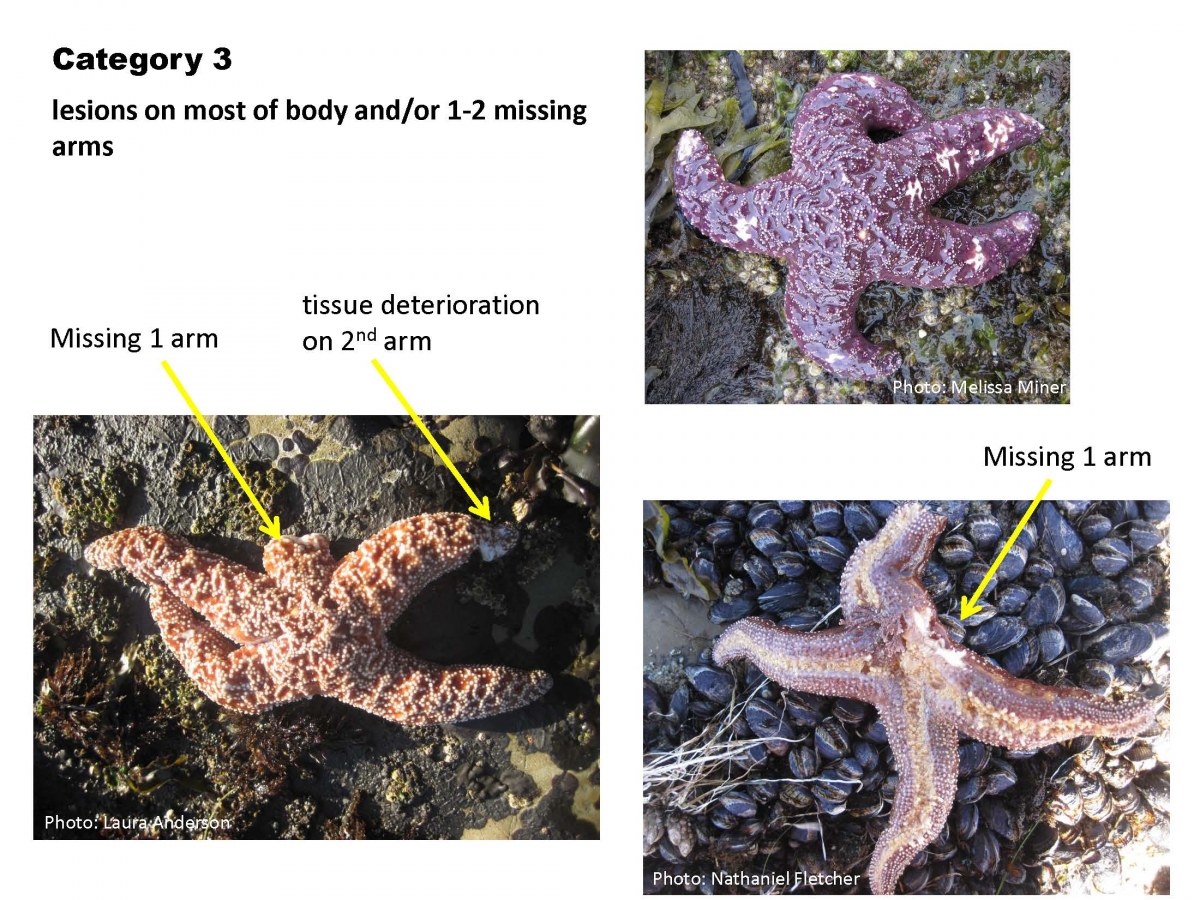
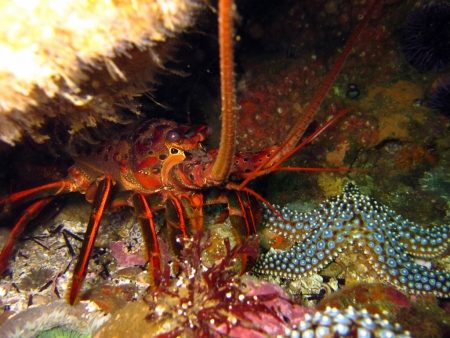 Spiny lobsters are most active night, posing some challenges for divers.
Spiny lobsters are most active night, posing some challenges for divers.